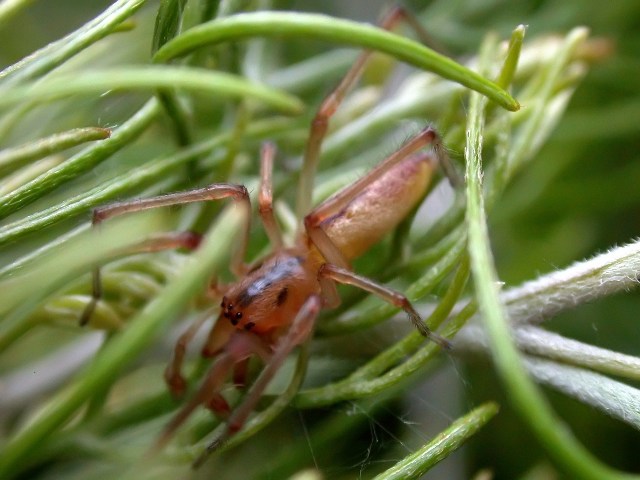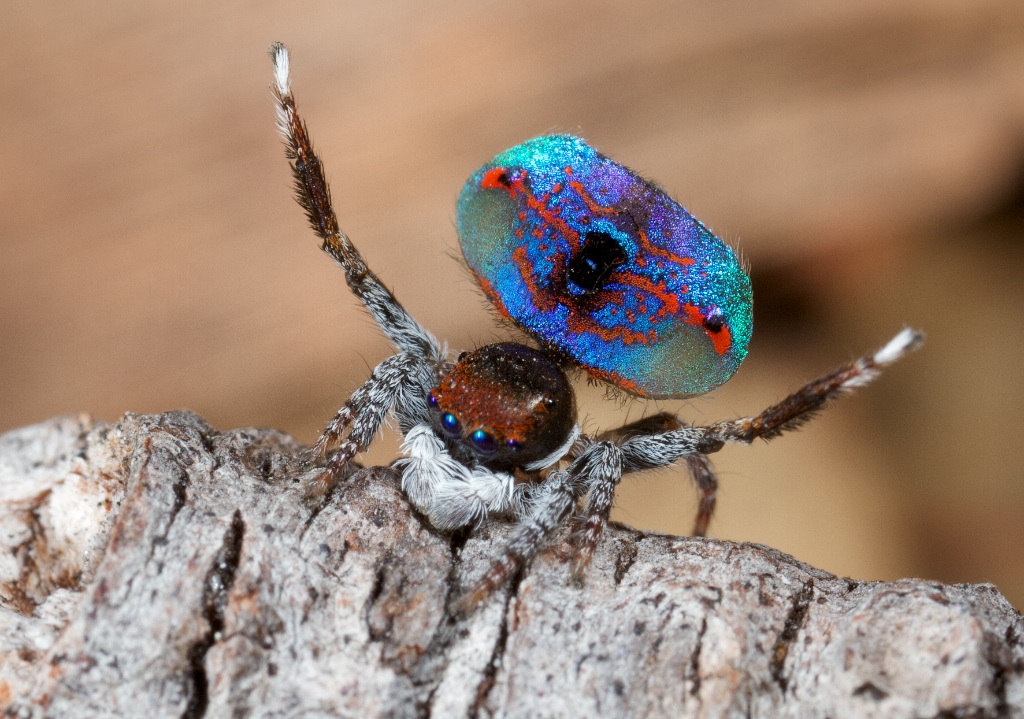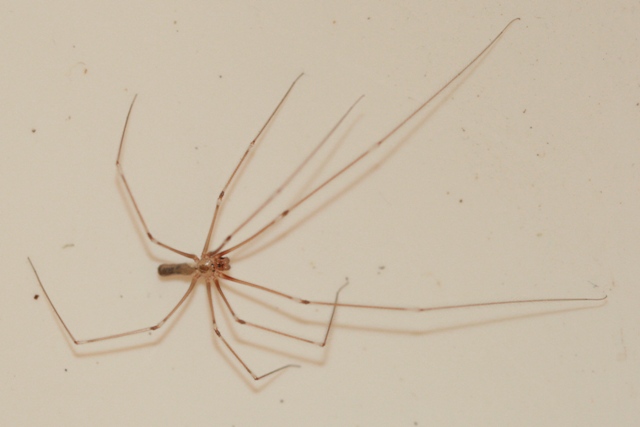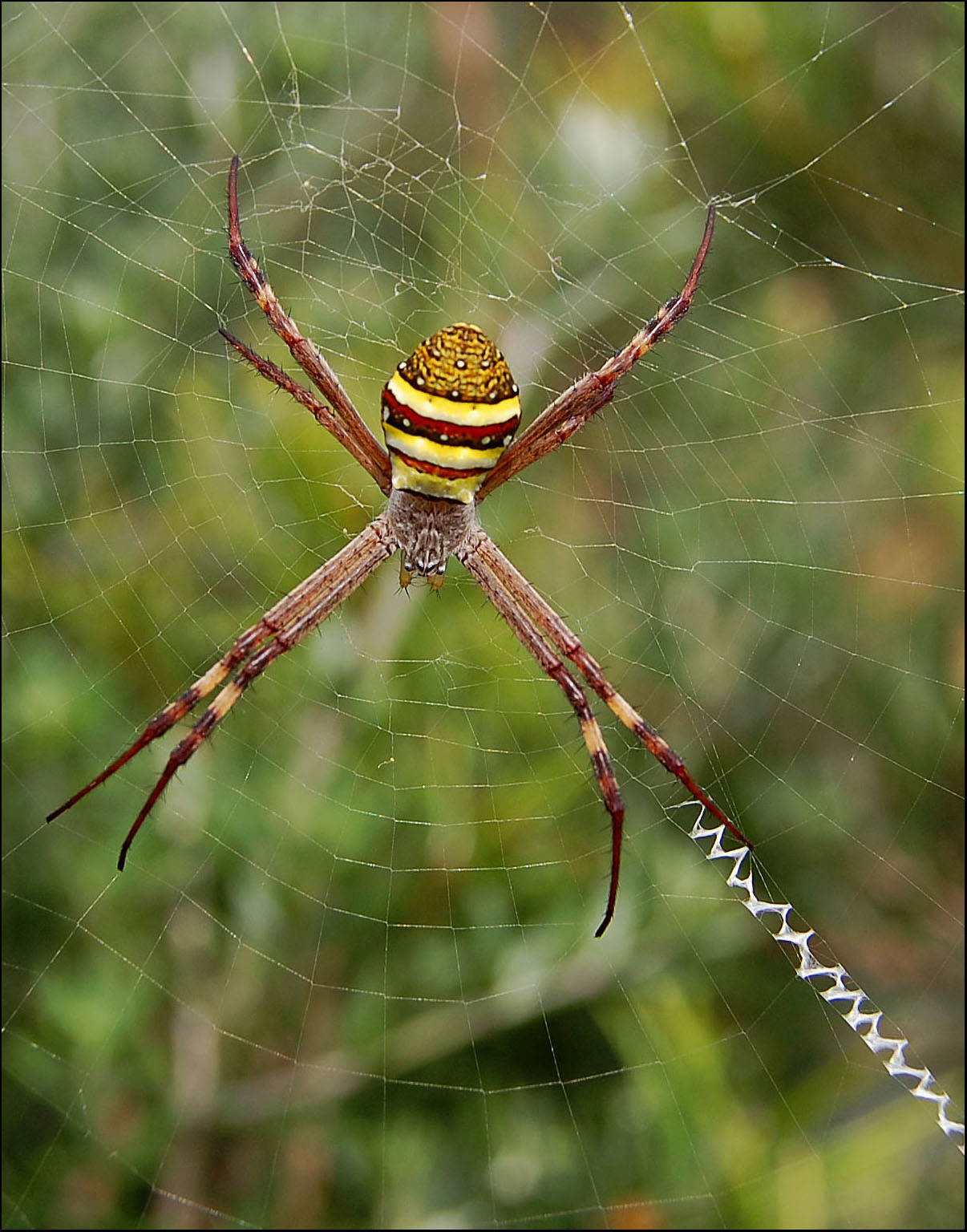Phylum Arthropoda
Subphylum Chelicerata
Class Arachnida
Order Araneae
Common name: spiders
Overview
Spiders are instantly recognisable, and are the group most associated with the word �arachnid�. The body of a spider possesses a medial constriction, or pedicel, that is similar to that seen in the Amblypygi (tail-less whip scorpions). The chelicerae of most spiders are unique amongst arachnids in that they are modified into fangs that contain ducts through which venom is discharged. Another feature unique to spiders is the presence of spinnerets, which are specialised silk producing organs. The spinnerets are a cluster of appendages (usually 6) at the posterior end of the abdomen. While pseudoscorpions and some mites also produce silk, spiders are the only arachnids to incorporate it into food capturing strategies (webs, nets, trip-lines. etc) or for the construction of living shelters (leaf-rolls, tunnels, burrows or webs). Many spiders also use a silk thread (gossamer) during the first life stages for dispersal. The pedipalps of most spiders are leg-like in form and only in sexually mature males are they modified for reproduction. These modifications usually involve the enlargement of the end segments and may be accompanied by lateral processes on preceding segments. Spiders vary enormously in size; the smallest are less than 0.5 mm while the largest tarantulas have leg spans that exceed 250 mm.
Several species are of medical significance due to the effects of their venoms, but of the many thousands of species known, only a tiny fraction is known to be dangerous to humans. However, Australia has some of the most poisonous spiders in the world, including the Sydney funnel web (Atrax robustus), and the red-back spider (Lactrodectus hasseltii). Both have been responsible for human deaths, but antivenenes to both species are now available.
Distribution and diversity
Spiders have a continent-wide distribution in Australia. Along with the mites (Parasitiformes and Acariformes), they are a mega-diverse group with over 41,000 described species worldwide. Australia has 3024 described species from 568 genera (accommodated in 79 families) but some researchers estimate that up to 10,000 species may exist on the continent. The largest families are the Salticidae (ca. described 330 species), Araneidae (ca. 230 species) and Lycosidae (ca. 140 species).
Life cycle
Mature male spiders are frequently smaller than the females. Mating behaviour in spiders is varied, although the following series of events applies to all. Males charge their pedipalps with sperm before attempting to attract a female. The pedipalps are syringe-like in function and are used to inseminate a female. Elaborate courtship may pre-empt mating, especially in cases where a large size difference exists between the sexes. In such cases, male cannibalism by females is common. After successful mating, the female lays her eggs in a silken cocoon which she usually guards. The juveniles hatch and often disperse via a gossamer thread of silk which the wind catches, lifting the first instar spiders into the air (called �ballooning�), often allowing dispersal over long distances. Juveniles undergo several moults before becoming mature adults.
Feeding
All spiders are predatory and their prey includes insects, other spiders and, sometimes for larger species, even small vertebrates. Many prey capturing strategies are employed by spiders, the most common of which are ambushing prey from a hide or burrow, stalking and attacking prey, and snaring prey in silk webs of varying construction. Prey items are usually bitten and injected with venom to immobilise them, and some species wrap the prey in silk. Prey is pre-orally digested before being consumed. Like most other arachnids, spiders are not capable of consuming solid particulate food. Pre-oral digestion involves the partial digestion of soft tissues before ingestion. The prey is entirely or partially crushed with the chelicerae and digestive enzymes are incorporated into the food mash. The enzymes reduce most of the soft body tissues into a liquid state that is then ingested.
Ecology
Spiders are found in all terrestrial habitats and some even have a semi-aquatic lifestyle. Depending on the group and their prey capturing strategy, spiders may be found in leaf litter, under rocks, logs or bark of trees, in burrows in the soil, in caves, or associated with distinctive webs in plant foliage or under rock overhangs. Spiders play an important role as predators in regulating invertebrate populations and are often present in great numbers. They are considered important in commercial crops and orchards as naturally control agents of pest insects, and cultural practices are often employed to encourage their presence. They are also important as food for other invertebrates (centipedes, scorpions) as well as vertebrates (reptiles, birds, small mammals).
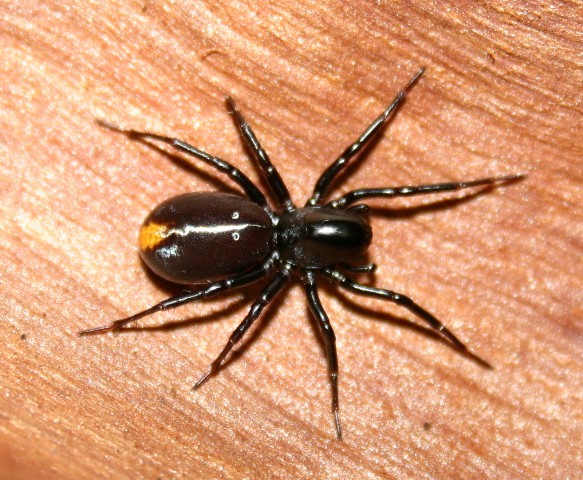
Storosa tetrica
Image credit: Photographer: Mark Harvey
� Western Australian Museum
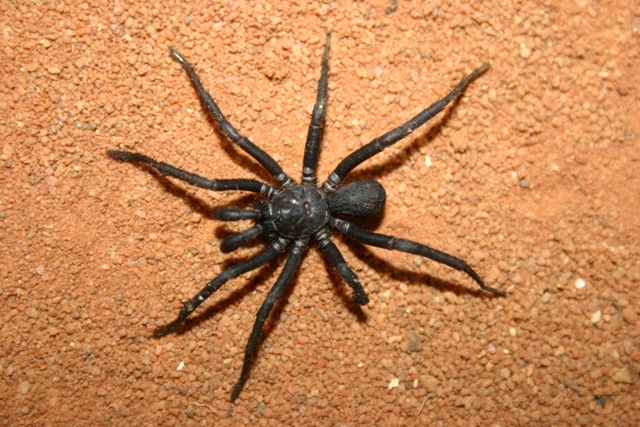
Aganippe sp.
Image credit: Photographer: Mark Harvey
� Western Australian Museum
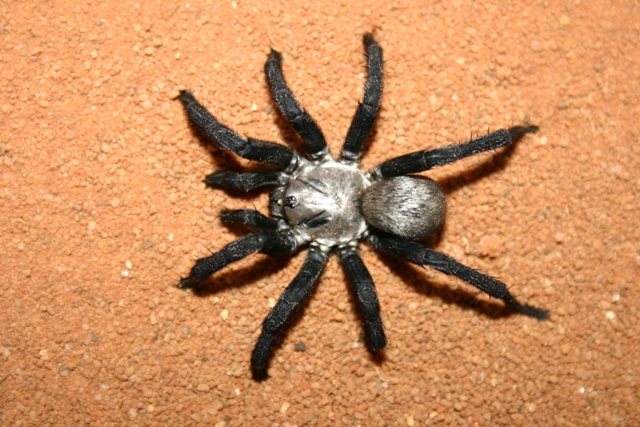
Idiomatta sp., male
Image credit: Photographer: Mark Harvey
� Western Australian Museum
